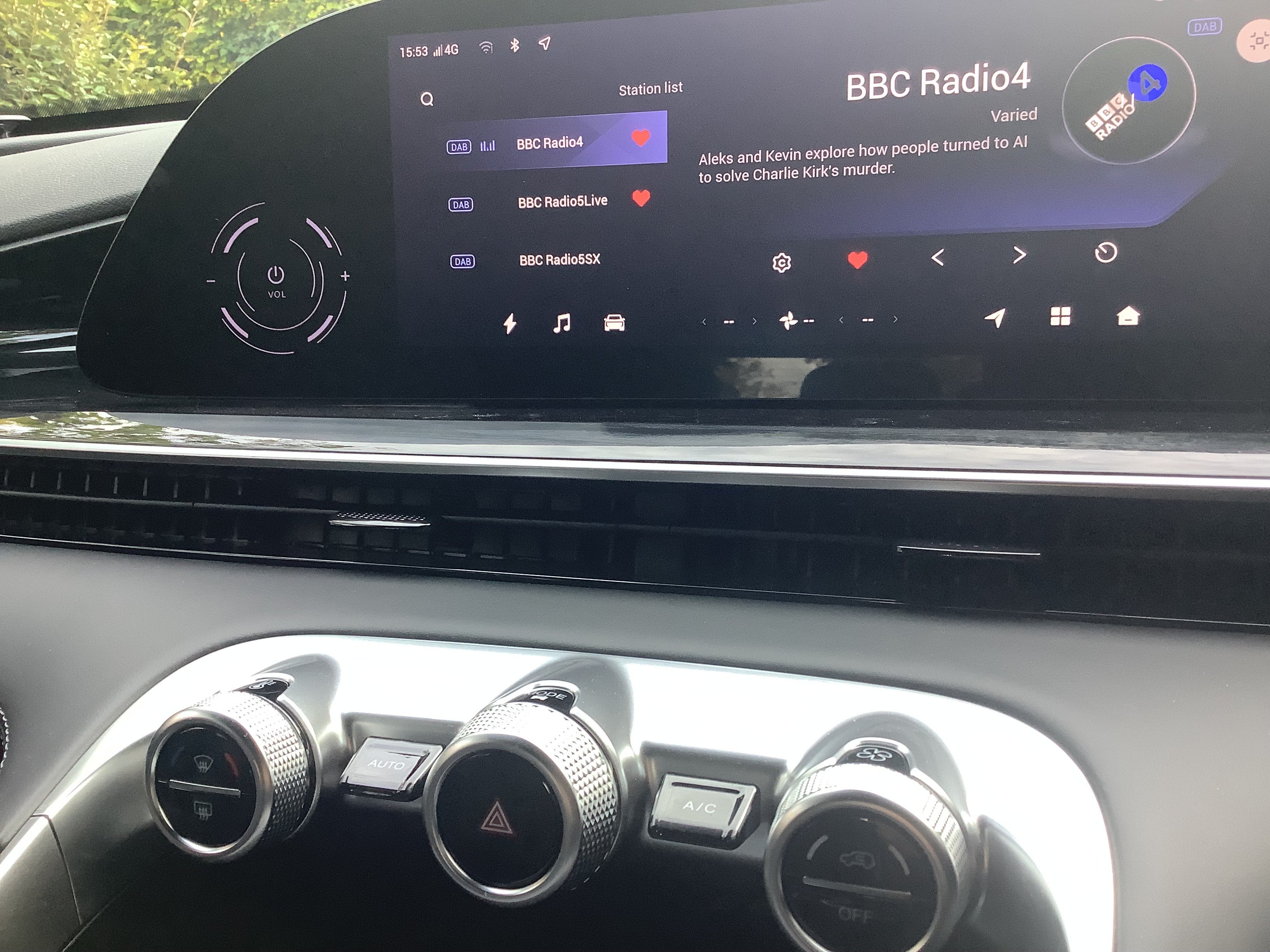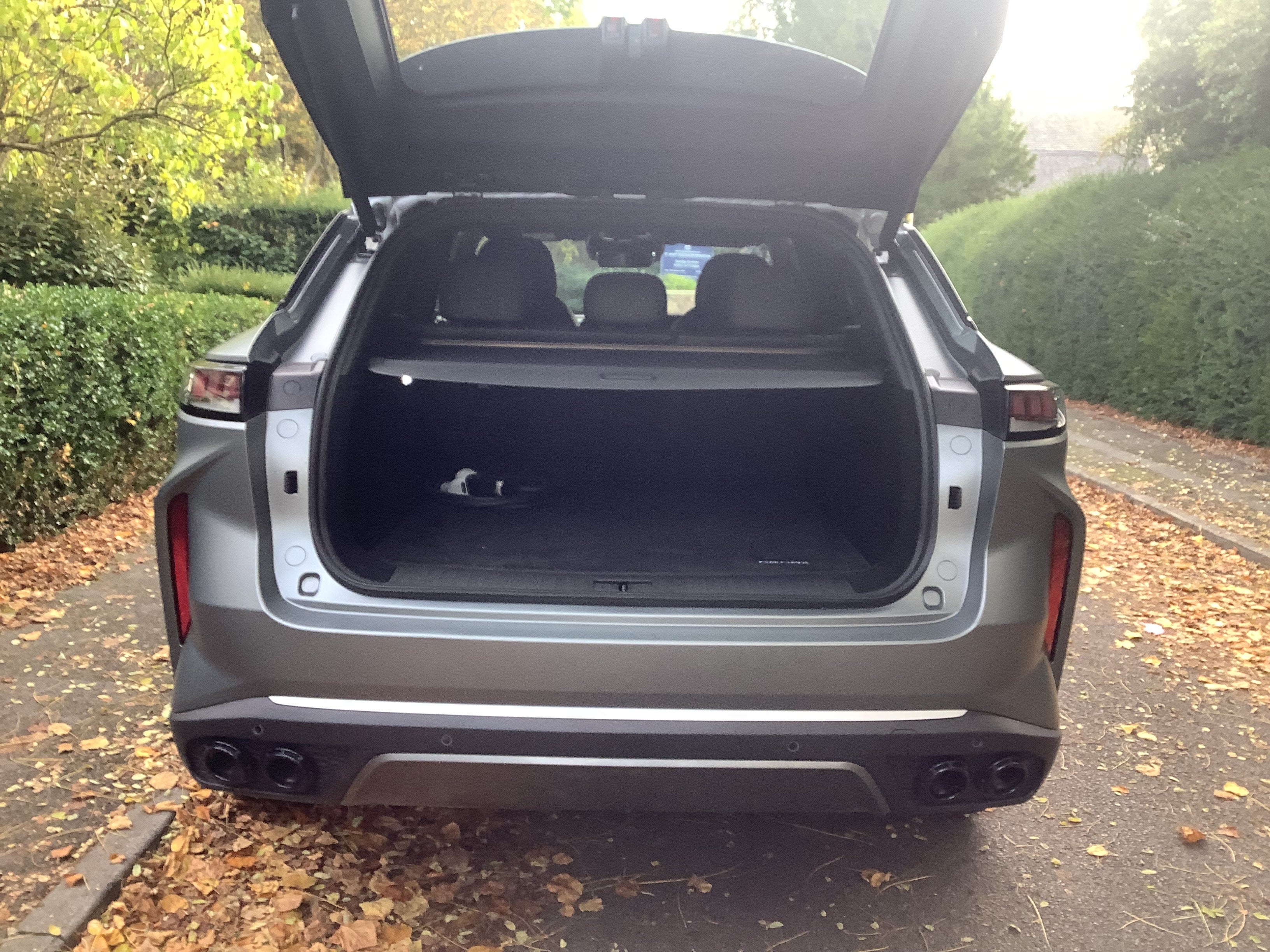According to an understandably overheated press release, the Omoda and Jaecoo car brands recently managed to grab 2.7 per cent of the UK market – which, if sustained, would put these two newcomer badges into roughly the same space as well-known names such as the Seat/Cupra combi, or Peugeot.
If there was any doubt about the strength of the Chinese “challenge” (the diplomatically favoured term) to the automotive establishment, then a succession of remarkable sales breakthroughs by those and other increasingly prominent makes, such as BYD, is indicative of just how rapidly the scenery is shifting.
The Omoda 9 SHS I’ve just been swanning around in goes quite some way in explaining why. Literally, in fact, given that this plug-in petrol/electric hybrid has a claimed electric-only range of 93 miles, which I found plausible in my time with the SUV/coupe crossover. A few years ago such a feat would have been thought impossible; yet here we are.
The Chinese companies are well known for their prowess in electric cars – confounding those who like to caricature the country as a coal-fired hypocrite – but this version of the Omoda 9 shows that they have all sectors of the market covered, including sophisticated plug-in hybrids. And it drives nicely.
In case you were wondering, “Omoda” is a word made up a few years ago by the maker, Chinese giant Chery, for export markets. Apparently: “The ‘O’ stands for life and vitality, a symbol of the essential element of life, oxygen. ‘Moda’ is derived from modern fashion.”
Whatever. It’s supposed to be the mainstream sibling to their premium Jaecoo range (I’ll explain that puzzling nomenclature another time), but the Omoda feels anything but cheap, let me say. It’s extremely well equipped, for example, with advanced laser-based Lidar assistance, complete connectivity and a classy, well-finished cabin.
THE SPEC
Omoda 9 SHS
Price: £46,475 (one model only)
Engine capacity: 1.5l petrol, 4-cyl + 34.5kWh battery, 3sp-auto 4WD
Power output (hp): 499
Top speed (mph): 124
0 to 60 (seconds): 4.9
Fuel economy (mpg): 166.2 (notional, using battery)
CO2 emissions (WLTP): 38 (notional, using battery)
The ride is comfortable, and the seats and steering wheel completely powered and adjustable – including the seat squab, which I always look out for as it really gives a car the bespoke touch. There’s also nice ambient lighting around the cabin, plus a “540-degree” panoramic camera system, which I think means that you can see the thing in bird’s-eye mode, not that they’ve reinvented geometry.
You also get cabin air purification, panoramic sunroof, heated and ventilated seats front and rear for the four cosseted occupants, plus a 14-speaker Sony surround sound system and a curved 24.6in display. Even the rear seats recline – just like a Bentley!
We’ll really only learn with time whether this is all durable and built properly, but, assuming it is, this is Mercedes kit at Citroen prices. For now, they’re offering a seven-year/100,000-mile warranty, comparable to the brand that pioneered such consumer reassurance, Kia. The boot is OK, 1,783l with seats down (bigger than the Volvo XC60, smaller than a Dacia Bigster).

The “SHS” in the model designation stands for “super hybrid system”, and it is, with the petrol engine able to drive the wheels directly where needed or to act as a generator to top up the battery pack depending on conditions. Power can also go to all four wheels in variable proportions. This is quite similar to the system used by Honda, and that also demonstrates that the Chinese makes are comparable to their better-established rivals.
The Omoda also deploys something called an M3P battery-cell system, which I confess I don’t understand, but which also contributes to its remarkable blend of performance, range and efficiency. They’ve not made the leap to solid-state cells yet, but it is certainly state of the art.
The net result is a total range of 700 miles, hot hatch performance and still-acceptable fuel consumption. Only when pressed in “sport” mode does the setup sound a bit strained.

I liked the Omoda 9, as I’m sure anyone would who isn’t an utter snob or Sinophobe, but there were a few things that stopped me falling in love with it.
The highly styled dash eats into legroom for taller passengers, and the ADAS (advanced driving assistance systems) require one to place too much faith in the Omoda, such that even a slight nervous pull on the steering wheel provokes the system to turn off, almost in petulant protest.
Also, the SatNav has an excessively Californian accent, as it told me about my planned journey from “Oad-bye” (Oadby) to “Harl” (Hull), and it thinks that “St” always means “street”, hence “Street Margaret’s Way”.
The Omoda’s lines are smart enough in their generically fashionable way, but the Hyundai Santa Fe is way more handsome. It’s an incredibly crowded market for plug-in hybrid fully-equipped SUVs, driven by tax breaks for company car users, but it’s worth exploring. Now you’ve heard of it, that is.


